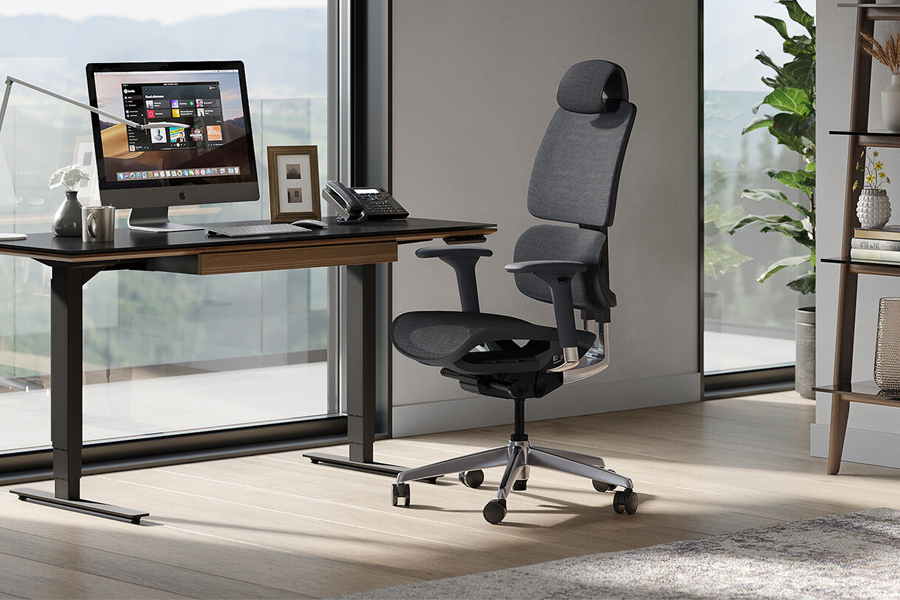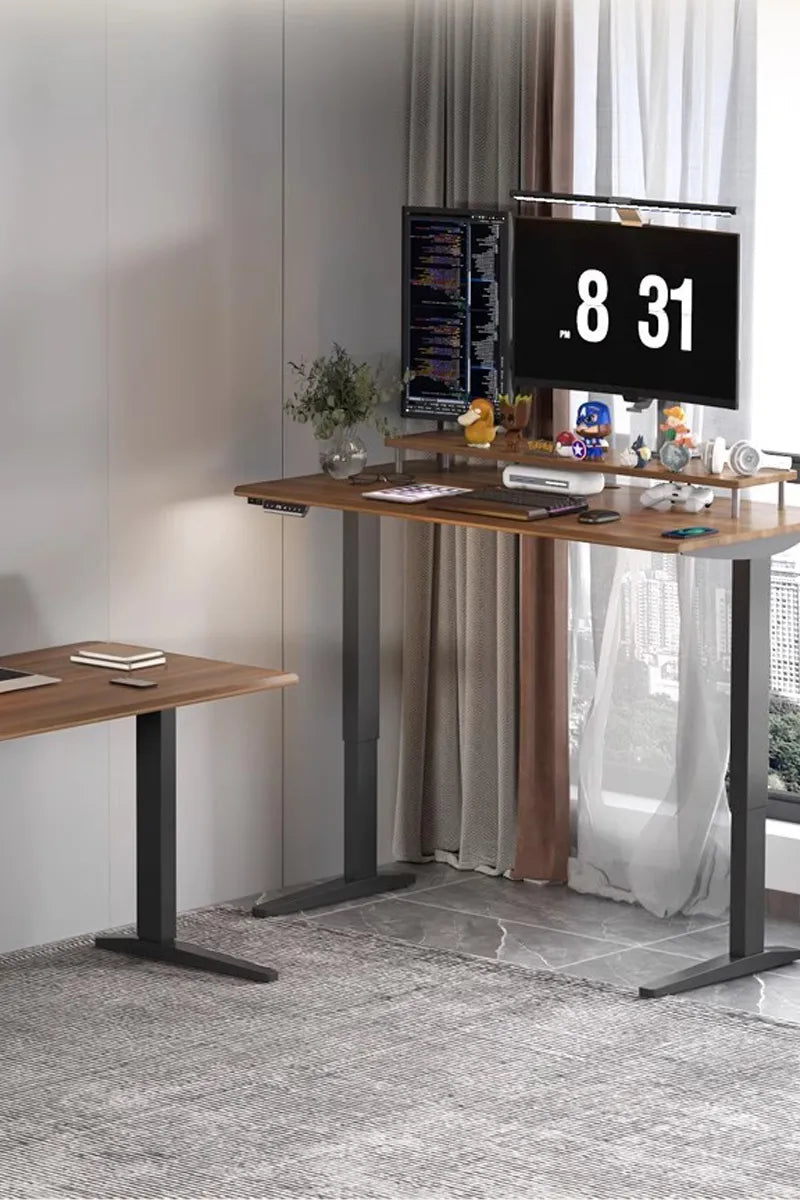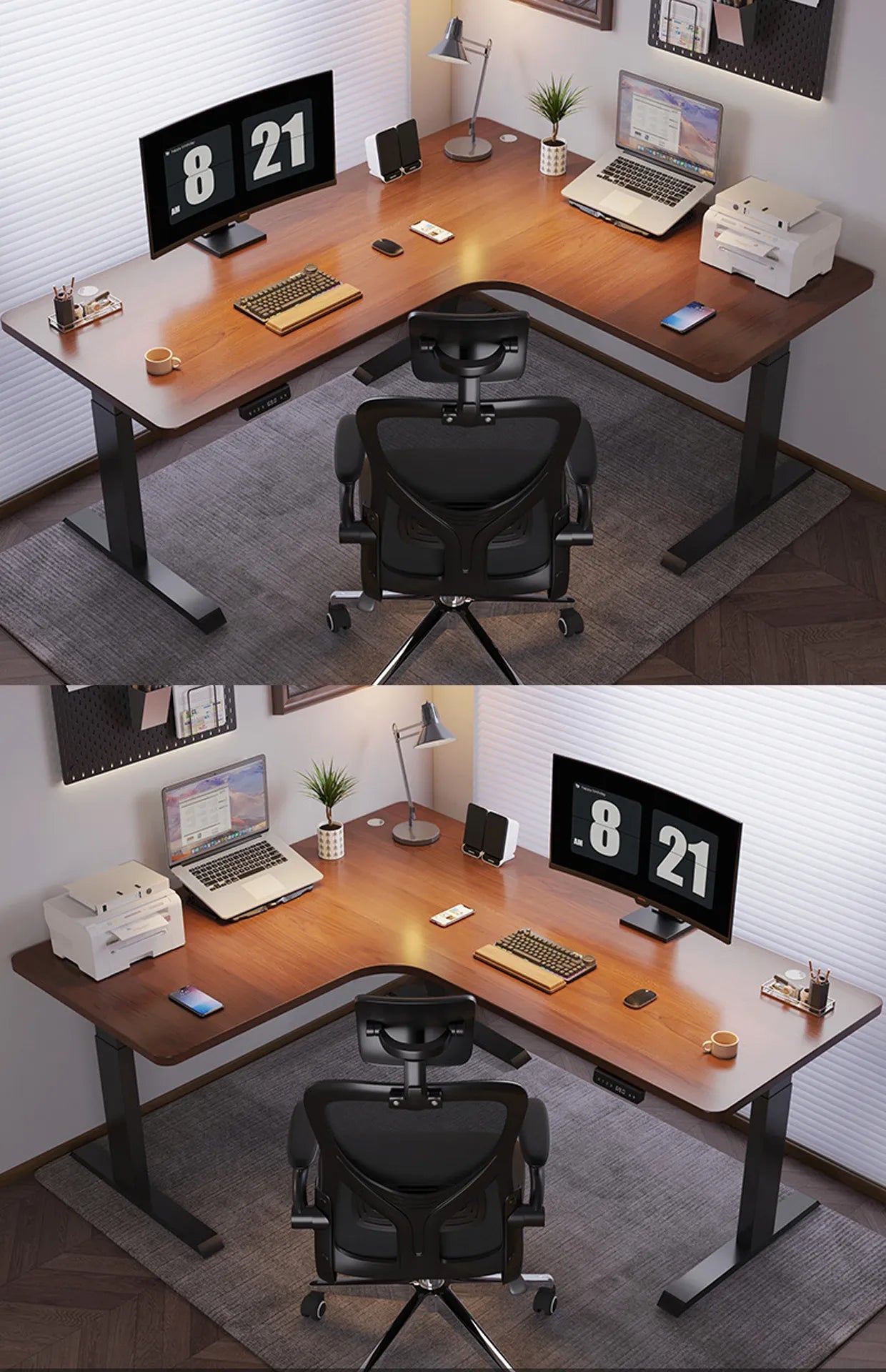Investing in a high-quality chair can significantly enhance your productivity and overall efficiency. When it comes to selecting a comfortable chair, the two main options are traditional office chairs and ergonomic chairs.
The choice between an office chair and an ergonomic chair depends on various factors such as personal preference, the intended usage, comfort requirements, health considerations, and budget constraints. However, our research and hands-on experience suggest that prioritizing overall well-being and productivity often lead to the recommendation of ergonomic chairs.

The primary distinction between office chairs and ergonomic chairs lies in their design focus and the level of support they offer. While office chairs typically provide basic adjustments and limited support, ergonomic chairs are meticulously crafted with the human body in mind. They offer advanced adjustability and targeted support, promoting better posture, enhanced comfort, and overall health benefits.
Many professionals endure discomfort, pain, or fatigue from prolonged periods of sitting in inadequately designed chairs. Determining the ideal chair for your needs can be challenging, even for the most informed consumers. This guide aims to assist you in making an informed decision by comparing key features of standard office chairs and ergonomic seats.
Prepare to elevate your productivity and create a healthier work environment by exploring the following sections. Discover the chair that aligns with your unique requirements, ensuring a perfect blend of comfort and support for optimal work performance.
What is an Office Chair?
Office chairs are meticulously crafted for the specific demands of office use, featuring a range of attributes such as adjustable height, armrests, and lumbar support.
Considering the prolonged durations spent seated at desks in office environments, the choice of an appropriate chair becomes paramount. The chair we select can significantly impact both our productivity and overall health.
When investing in an office chair, prioritizing comfort is of utmost importance. Opting for a chair that ensures comfort is a critical consideration, as discomfort can adversely affect productivity and well-being. The ability to work effectively and maintain a sense of health during office hours is directly linked to the comfort provided by the chosen chair.
Therefore, when embarking on the journey to acquire an office chair, the foremost criterion should be its comfort level. A chair that doesn't align with your comfort needs can hinder productivity and compromise your well-being, highlighting the significance of selecting the right chair for a conducive and health-conscious work environment.

What Is An Ergonomic Chair?
An ergonomic chair stands as a premium seating option designed to prioritize both comfort and posture. Engineered to facilitate a neutral body posture, it effectively minimizes pressure points and enhances circulation. These chairs are meticulously crafted to offer comprehensive support, spanning from the headrest to the armrests, and extending down to the level of the feet.
Furthermore, ergonomic chairs emerge as the optimal choice for individuals seeking relief from back and neck pain. Their specialized design and features position them as the ideal office chair for reducing discomfort in these areas, making them a preferred solution for those prioritizing both health and workplace ergonomics.

Difference Between Office chair and Ergonomic Chair
|
Feature |
Office Chair |
Ergonomic Chair |
|
Design |
Traditional design, one size fits all |
Customizable design, adjusts to individual needs |
|
Adjustability |
Limited adjustability |
Highly adjustable, allows for optimal comfort |
|
Posture Support |
Provides basic support for sitting |
Provides full-body support for sitting and movement |
|
Comfort |
Basic padding, not always comfortable for long periods |
Advanced padding and design, designed for comfort during long periods of sitting |
|
Price |
Affordable, can range from low to high prices |
More expensive, usually ranges from moderate to high prices |
|
Health Benefits |
Minimal health benefits, may contribute to pain and discomfort |
Provides several health benefits, reduces pain and discomfort, improves posture and productivity |

Office chair Vs Ergonomic Chair Which One Is Better ?
Based on our extensive research and practical experience, ergonomic chairs surpass traditional office chairs in offering a multitude of advantages. Specifically designed to deliver tailored support and adjustability, ergonomic chairs prioritize optimal comfort and posture. This feature set aims to alleviate discomfort, diminish pain, and mitigate fatigue that often accompanies prolonged periods of sitting. Remarkably, these chairs are versatile enough to be utilized while standing or walking.
Although the initial cost of an ergonomic chair may be higher than that of a conventional office chair, the long-term benefits it provides for health and productivity make it a worthwhile investment.
Research supports the health advantages of ergonomic chairs, with a study published in the Journal of Occupational Rehabilitation revealing a significant reduction in the prevalence of low back pain among office workers who used ergonomic chairs.
While these chairs are conventionally associated with desk use, their adaptability extends beyond the office environment, making them suitable for various settings. Choosing ergonomic office chairs not only addresses immediate concerns related to discomfort but also contributes to long-term health benefits, ultimately enhancing overall well-being and productivity.

Why Should You Buy An Ergonomic Chair?
The experience has been exceptionally positive. Here are some compelling reasons why investing in an ergonomic chair is highly beneficial:
Reduces Back Pain:
Before using the ergonomic chair, I often experienced lower back pain and discomfort during prolonged periods of sitting. However, since switching to an ergonomic chair, I've noticed a significant decrease in back pain. Our research aligns with this experience, as the Journal of Occupational Rehabilitation indicates that ergonomic chairs significantly reduce the prevalence of low back pain among office workers. Chairs with adjustable features, such as lumbar support and armrests, were particularly effective in minimizing discomfort and pain. Therefore, an ergonomic chair is considered the best office chair for long hours of sitting.
Improves Productivity:
Whether you're a student or a professional, enhancing productivity at your workspace is crucial. The ease of adjustment in the ergonomic chair allows me to customize it to fit my body precisely, aiding in maintaining good posture. The result has been increased focus and reduced fatigue during extended work sessions. This aligns with findings from the Journal of Applied Psychology, which indicates that workers provided with comfortable chairs reported higher job satisfaction and increased productivity compared to those without.
Improved Posture:
Poor posture is a common issue among office workers, leading to pain and discomfort. Ergonomic chairs are designed to promote good posture, reducing strain on the neck, shoulders, and back. This makes them the preferred choice for individuals seeking the best office chair for neck and shoulder pain reduction. The Journal of Physical Therapy Science supports this, demonstrating that ergonomic chairs improve spinal curvature and reduce muscle activity responsible for maintaining posture.
Supportive Design:
The ergonomic chair stands out for its added comfort, featuring cushions and a design that surpasses traditional chairs. This enhanced comfort allows for longer periods of uninterrupted sitting without the need for frequent breaks.
Prevents Musculoskeletal Disorders:
Musculoskeletal disorders (MSDs) are a significant concern in the workplace, leading to injuries and illnesses. Ergonomic chairs contribute to risk mitigation by encouraging movement and improving circulation. Research, such as that from the American Journal of Epidemiology, associates prolonged sitting with increased mortality from various causes, including cardiovascular disease and cancer.‘

Conclusion:
When faced with the decision between an office chair and an ergonomic chair, it's crucial to assess your unique needs and circumstances. If your work involves prolonged periods of sitting and you aim to foster good posture while minimizing the risk of discomfort and pain, opting for an ergonomic chair might be the optimal choice. On the other hand, if budget constraints are a concern or if your sitting requirements are relatively short, a traditional office chair may meet your needs adequately. Whichever decision you make, it's paramount to prioritize your health and comfort in the work environment.
In conclusion, considering budget constraints, an ergonomic chair emerges as the superior option for enhancing both productivity and health. This blog aims to alleviate any confusion surrounding the choice between office chairs and ergonomic chairs, providing clarity for individuals navigating this decision-making process.
FAQs:
Question: Which office chair is ideal for extended periods of sitting?
An ergonomic chair stands out as the optimal choice for prolonged sitting. This specialized chair is meticulously designed to offer personalized support and adjustability, effectively reducing discomfort, pain, and fatigue during extended periods of sitting.
Question: What sets an ergonomic chair apart from a standard office chair?
Distinguished by its custom support and adaptability, an ergonomic chair is specifically engineered for optimal comfort and posture during extended sitting sessions. Featuring a customizable design, advanced padding, and a range of adjustment options, it caters to the individual needs of the user. In contrast, a standard office chair typically boasts a basic design, limited adjustability, and basic padding.
Question: Can an ergonomic chair truly alleviate back pain?
Indeed, an ergonomic chair plays a significant role in reducing back pain by providing adequate support and encouraging proper posture. Our research confirms that the use of an ergonomic chair can effectively diminish lower back pain and discomfort experienced by office workers.
Question: Is investing in an ergonomic chair worthwhile?
For individuals who spend substantial time at a desk, the consideration of investing in a chair that prioritizes their well-being is crucial. While the upfront cost of ergonomic chairs may exceed that of regular office chairs, they deliver numerous health benefits, including pain reduction, posture improvement, and heightened productivity. In the grand scheme, the long-term health advantages and increased efficiency may outweigh the initial investment in the chair.













Leave a comment
All comments are moderated before being published.
This site is protected by hCaptcha and the hCaptcha Privacy Policy and Terms of Service apply.